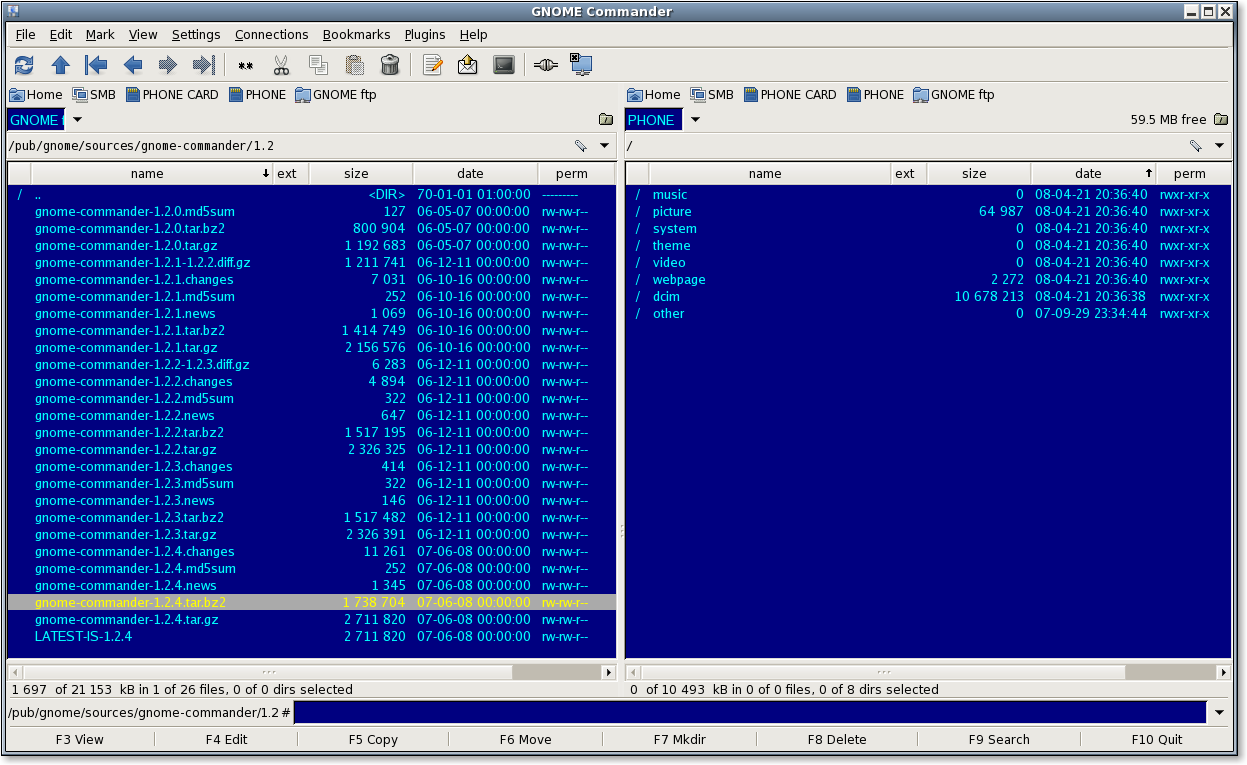Getting Started
To Start GNOME Commander
You can start GNOME Commander in the following ways:
- menu
-
Choose .
- Baris perintah
-
To start GNOME Commander from a command line, type the following command, then press Return:
gnome-commander
When You Start GNOME Commander
When you start GNOME Commander, the following window is displayed.
The GNOME Commander window contains the following elements:
- Menubar.
-
The menus on the menubar contain all of the commands you need to work with files in GNOME Commander.
- Toolbar.
-
The toolbar contains a subset of the commands that you can access from the menubar.
- Statusbar.
-
The statusbar displays information about current GNOME Commander activity and contextual information about the menu items.
Command Line Options
- Options
-
-
--help
Show summary of options.
-
--version
Show version of GNOME Commander.
-
-l, --start-left-dir=STRING
Specify the start directory for the left pane.
-
-r, --start-right-dir=STRING
Specify the start directory for the right pane.
-
--config-dir=STRING
Specify the directory for configuration files.
-
-d, --debug=STRING
Specify debug flags to use. Debug output will be written to stdout.
Possible flags:
-
a set all debug flags
-
c file and directory counting
-
d directory ref-counting
-
f file ref-counting
-
g run_command debugging
-
i image loader
-
k directory pool
-
l directory listings
-
m connection debugging
-
n directory monitoring
-
p python plugins
-
s SMB network browser
-
t metadata tags
-
u user actions debugging
-
v internal viewer
-
w widget_lookup
-
x xfer
-
y brief MIME based imageload
-
z detailed MIME based imageload
-
-
[gtk,gnome,bonobo options]
Standard gtk, gnome, bonobo options are supported. Use --help to see possible options.
-
- Examples
-
gnome-commander -d nvl
Starts GNOME Commander with debugging of directory listings, internal viewer and directory monitoring facilities.
